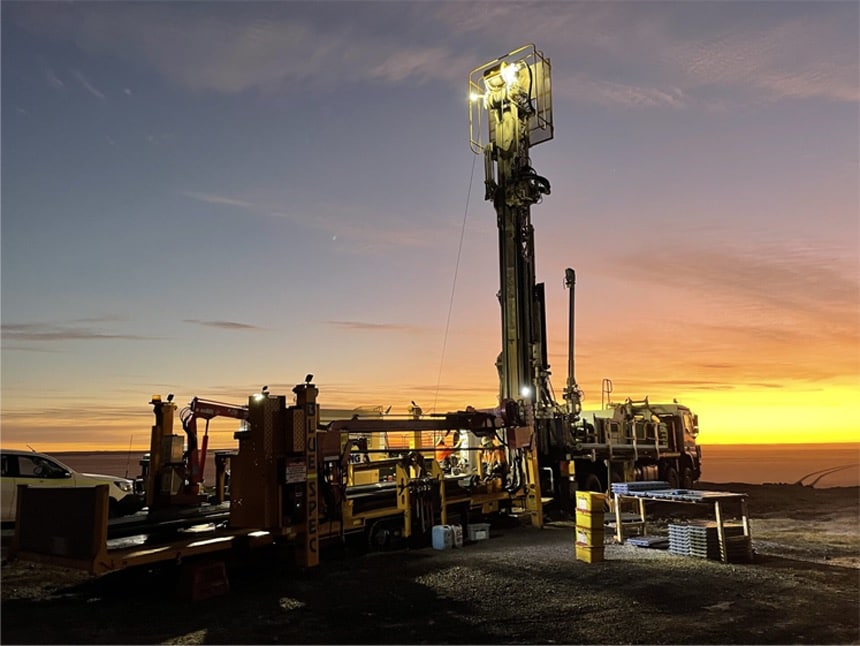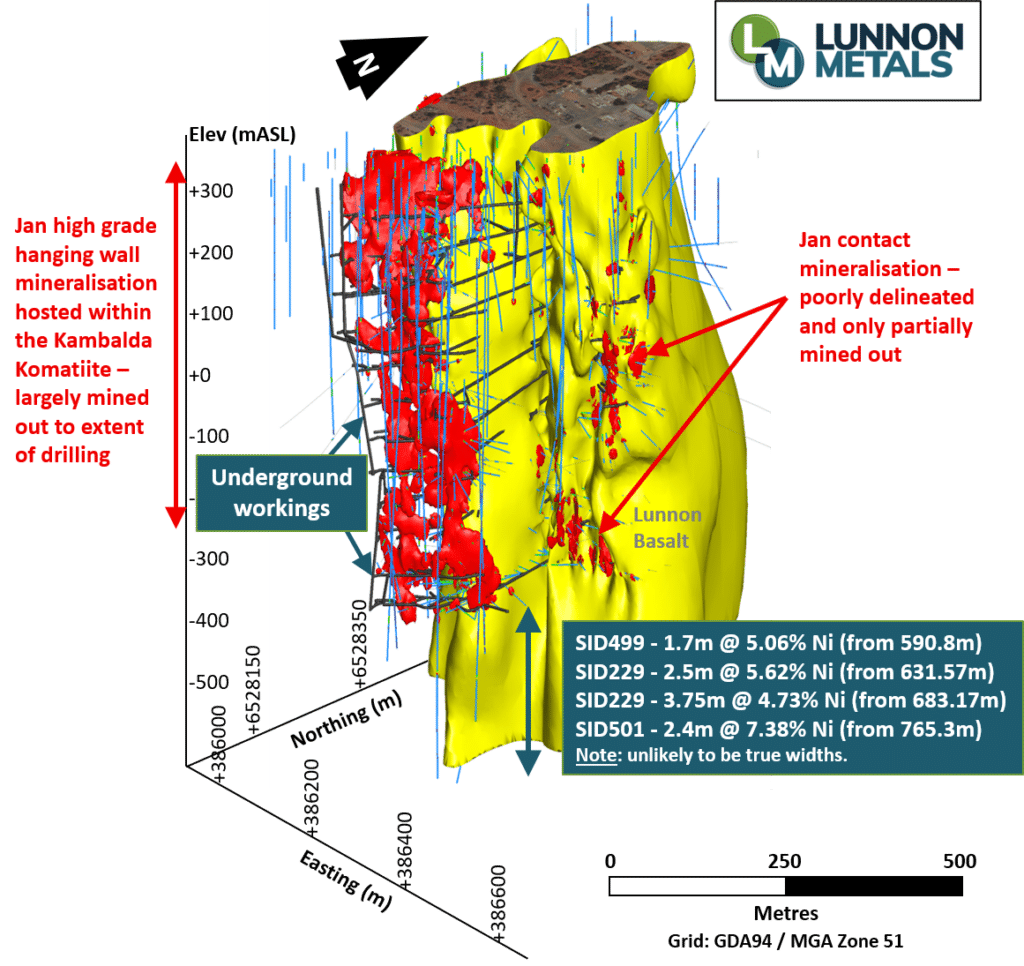

Jan Shaft
Project Overview
Jan Shaft was one of the earliest nickel mines to be shut at Kambalda by WMC in 1986 after just over 30,000 tonnes of nickel metal had been produced, with the then new 2-3 mtpa St Ives gold processing plant subsequently built atop of the mine utilising a significant portion of the existing surface mine infrastructure for this new plant site. The defined nickel shoots were mined to depths of approximately 560 metres below surface at that time with significant high grade nickel sulphide intercepts recorded beneath the mine workings, indicating that the mineralised system may remain open at depth.
The mine has a historical estimate prepared by WMC at the closure of the mine. Because testing of potential extensions to the main nickel mineralised positions at depth is difficult due to the orientation of the required surface drill positions, activity will focus on reviewing, validating and re-estimating the WMC remnant historical estimate with the aim of converting a portion to JORC 2012 Mineral Resource if possible.
GEOLOGY
The Jan nickel shoots represent a series of deeply incised, vertical plunging troughs and associated extensive hanging wall shoots.

Sign Up for ASX Alerts and News to receive the latest updates, insights, and developments directly to your inbox.